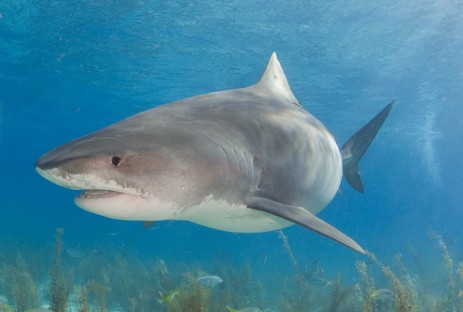This post is co-authored with Discovery Channel GM & President John Ford.
—–
 Photo: Willy VolkEvery half-second a shark is killed for its fins, so in the time it takes you to read this post, hundreds of sharks will die. “Finning,” as the practice is known, is decimating shark populations world-wide. Every year up to 73 million sharks are caught, stripped of their fins, and left for dead in the ocean.
Photo: Willy VolkEvery half-second a shark is killed for its fins, so in the time it takes you to read this post, hundreds of sharks will die. “Finning,” as the practice is known, is decimating shark populations world-wide. Every year up to 73 million sharks are caught, stripped of their fins, and left for dead in the ocean.
Shark fins are a delicacy in many Asian countries, and the market is expanding to other parts of the globe. Fishing boats can save cargo space and pack more shark fins by just cutting off the fins and throwing the rest of the shark back into the ocean. But a shark can’t survive without its fins.
Sharks are the ocean’s top predators. They sit at the apex of the food chain, and their presence balances out the populations of the ecosystem.
They’ve roamed the seas since hundreds of millions of years before the dinosaurs, adapted to perfection for their habitat and purpose. But many species of shark are now facing extinction because of finning.
Sharks are often large, slow-growing, and slow to reproduce. They just can’t be slaughtered in large numbers and still survive as species. Already some scientists believe that there are species that are “functionally extinct,” unable to perform their role as top predator.
Removing sharks from the food chain will have broad, cascading, and unpredictable effects. To see this, we can just look at the experience of removing top predators on land.
Wolves disappeared from Yellowstone National Park in the early 1900s. As a result, elk populations boomed, with unchecked numbers grazing on aspen trees. In turn, the aspen trees were decimated, and their loss had a devastating effect on animals that relied on the trees for their habitat — songbirds and beavers, in particular. Moreover, with the aspen trees gone, there was little to prevent rivers and streams from eroding their banks.
Yellowstone’s ecosystem deteriorated until wolves were reintroduced in the mid-1990s. Then, the aspen stands recovered and with them the species they supported.
Sharks serve the same purpose in our world’s oceans, balancing out populations of species so the whole system works. To protect sharks, Congress passed the Shark Finning Prohibition Act in 2000. But the act left some big loopholes, and we are working together to push to close them.
The Shark Conservation Act of 2009 [introduced by Senator Kerry and supported by John Ford of the Discovery Channel] would ban any U.S.-flagged vessel from carrying shark fins without the rest of the shark, and they must be brought to port with their fins naturally attached.
The legislation also would protect the American fishing industry by allowing the United States to identify and take action against any countries that do not have a regulatory framework comparable to ours to protect sharks.
We’ve already got some great support for this bill. There are 10 co-sponsors in the Senate representing some of the biggest fishing regions in America. In addition, the Pew Environment Group has joined the cause, pushing for protection of these amazing species of fish.
This week, during the Discovery Channel’s Shark Week, there’s no better time to step up the effort to end the disturbing and destructive practice of finning.
Time is running out on some species of sharks. If we don’t take action soon, some of them will become extinct. And with the oceans under increasing strain from the effects of the crisis of global climate change, we can’t afford to slaughter such an important part of the ecosystem past the brink of extinction.


